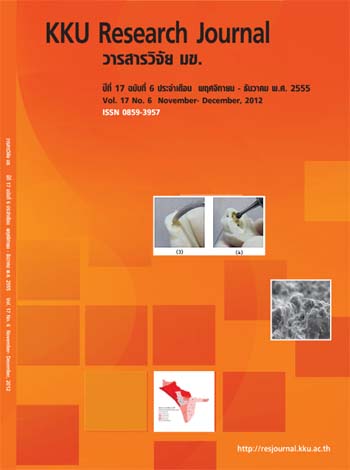Study of volatile compounds in Thai rice wine (Sato) produced from wheat
Main Article Content
Abstract
Metabolism of nitrogen source such as amino acids is an important factor contributing to the production
of volatile compounds in alcoholic beverages. In rice wine production, amino acids come from the proteolysis
of rice during koji fermentation. This research studied volatile compounds in Sato as affected by raw material
containing high nitrogen content such as wheat rice (WR) comparing with glutinous rice (GR, control sample).
Total soluble solid (TSS) and total nitrogen (TN) were determined in koji at the end of fermentation (7 days).
Free amino acid, ethanol and volatile compounds were measured every 2 days. The TSS values of koji made
using WR and GR were 17.13 and 21.53 oBrix, respectively. The TN values of those samples were 0.240% and
0.085%, respectively. During alcoholic fermentation, higher reduction in TN was observed in the WR sample
(0.09% reduction) compared with the control sample (0.04% reduction) during the first 2 days, and its TN content
continuously decreased until the end of fermentation. This inversely correlated with an increase in alcohol pattern
of the two samples. At the end of fermentation, there were 12.7 and 10.8% (v/v) alcohol in the WR and GR
samples, respectively. Higher concentration of 3-methyl-1-butanol, phenylethanol, phenetyl acetate and diethyl
succinate was observed in the WR sample compared with the GR sample. However, some of these volatiles were
observed at the first day of alcoholic fermentation suggesting that these compounds are already produced during
koji fermentation.


